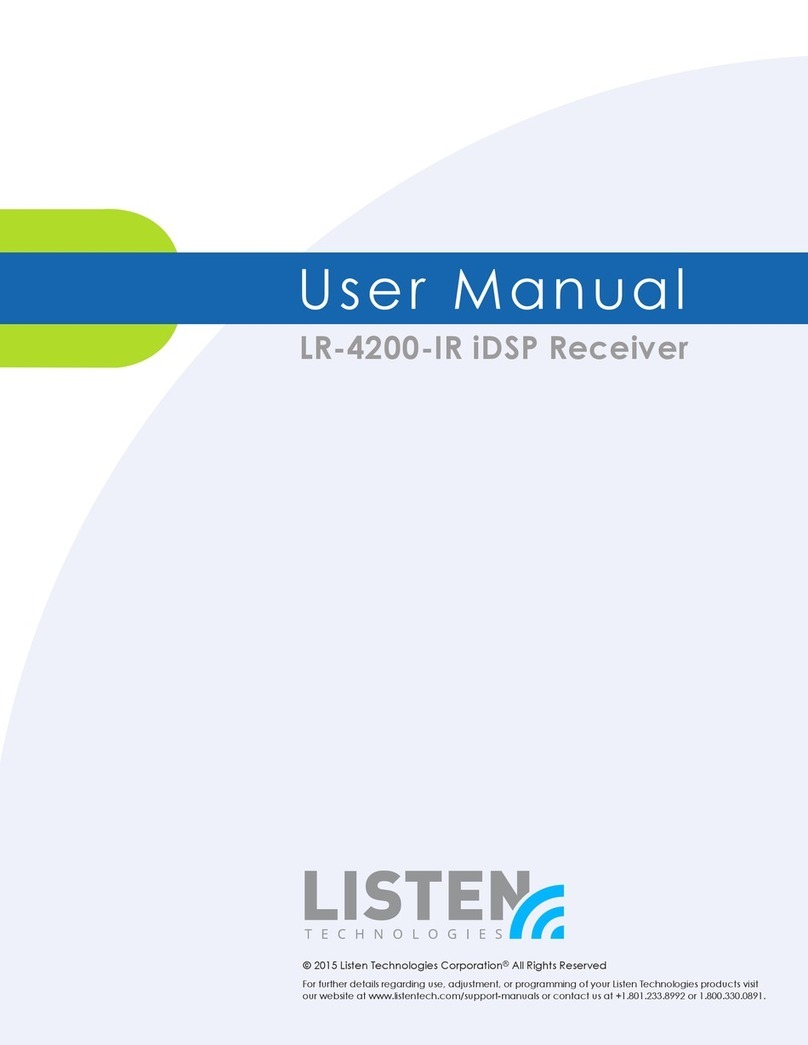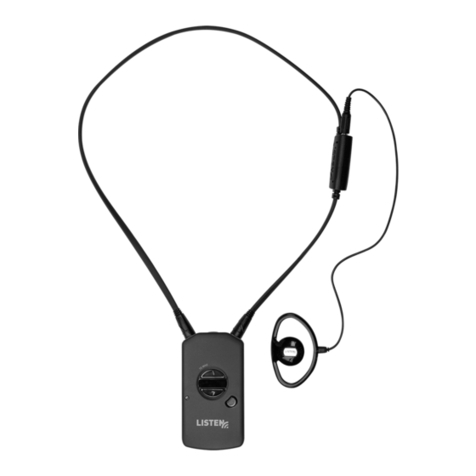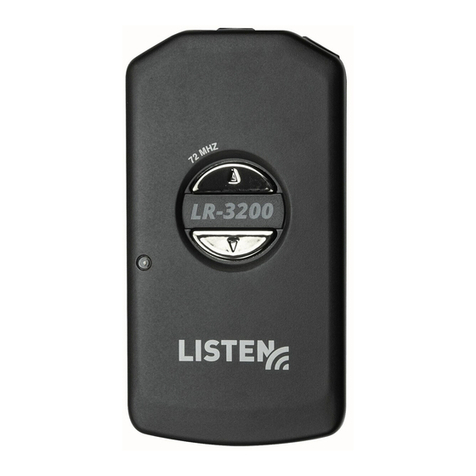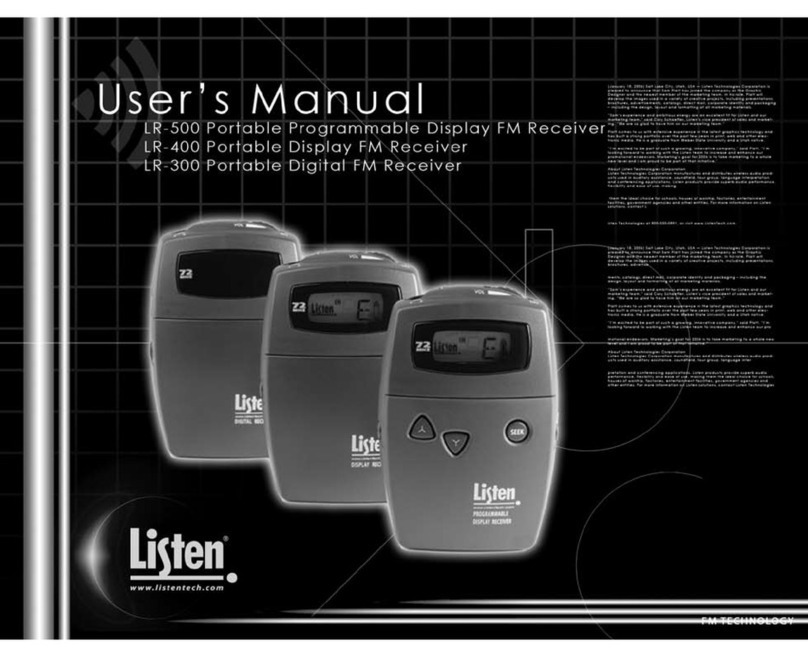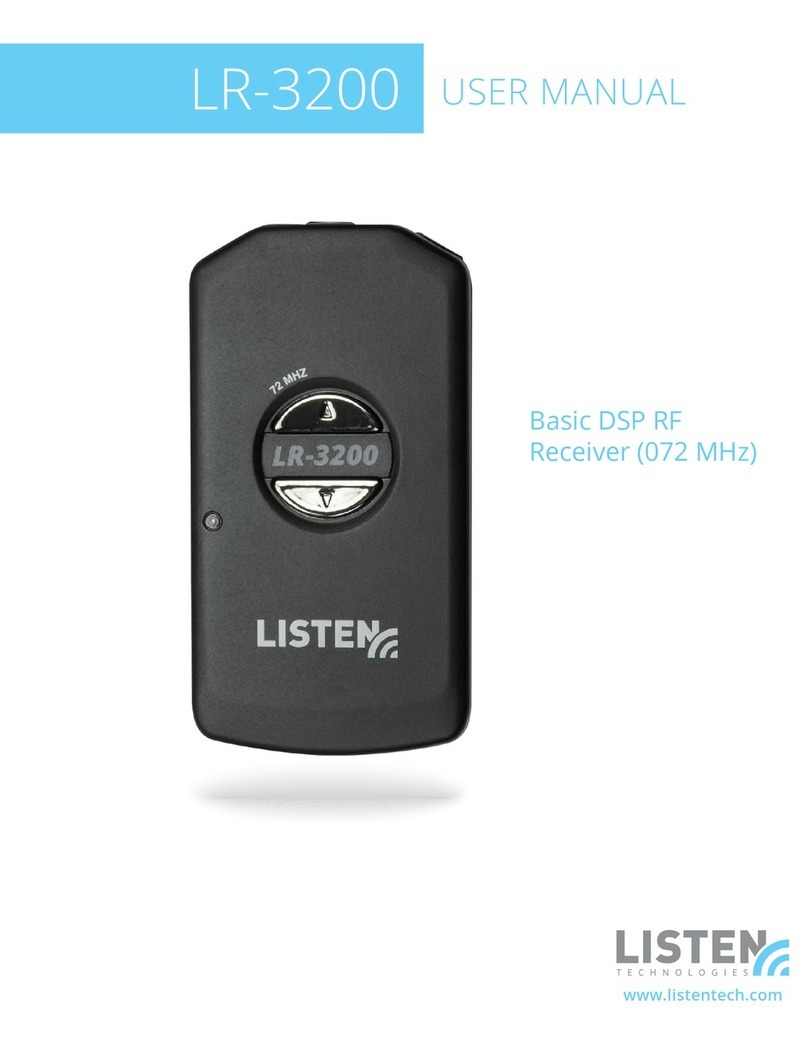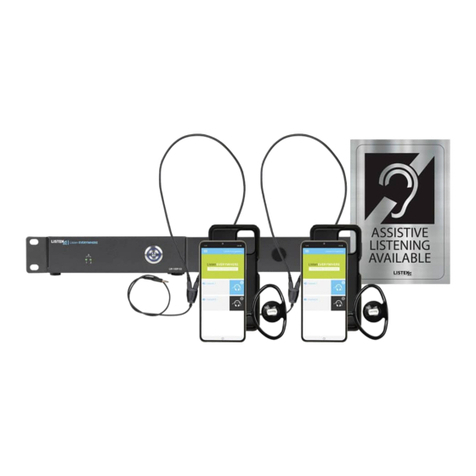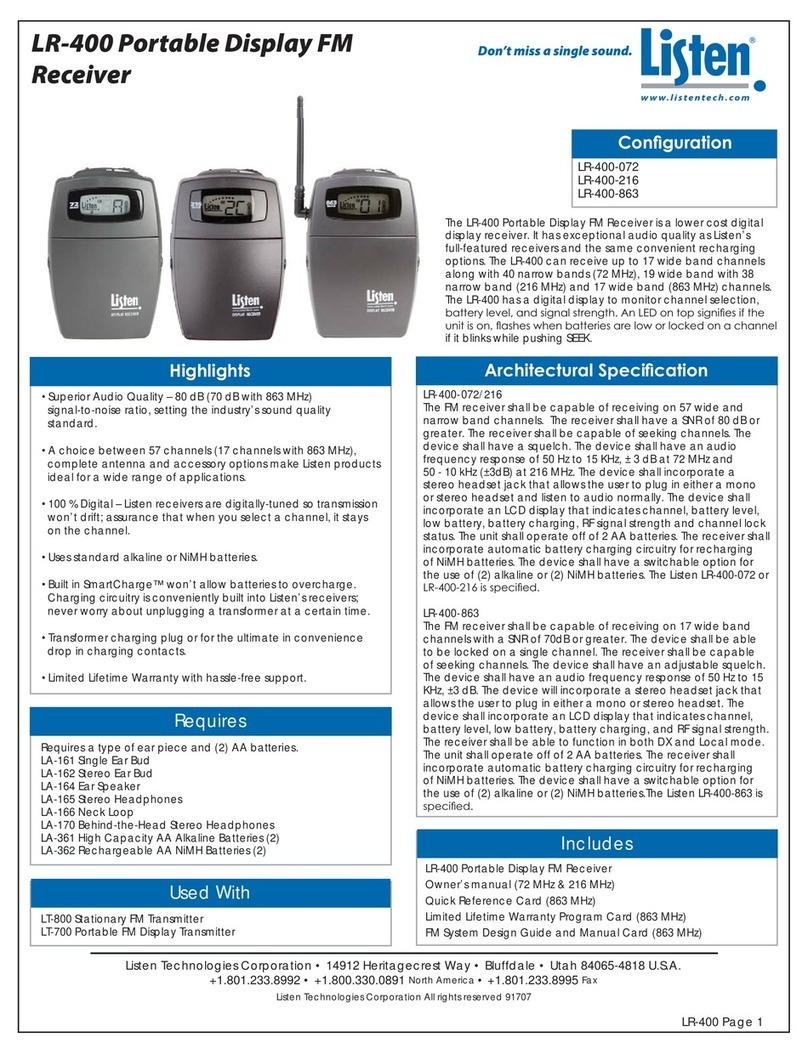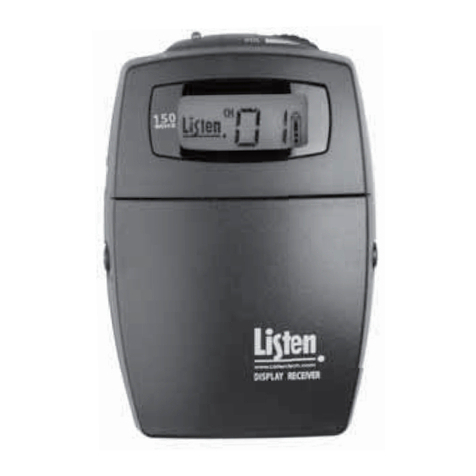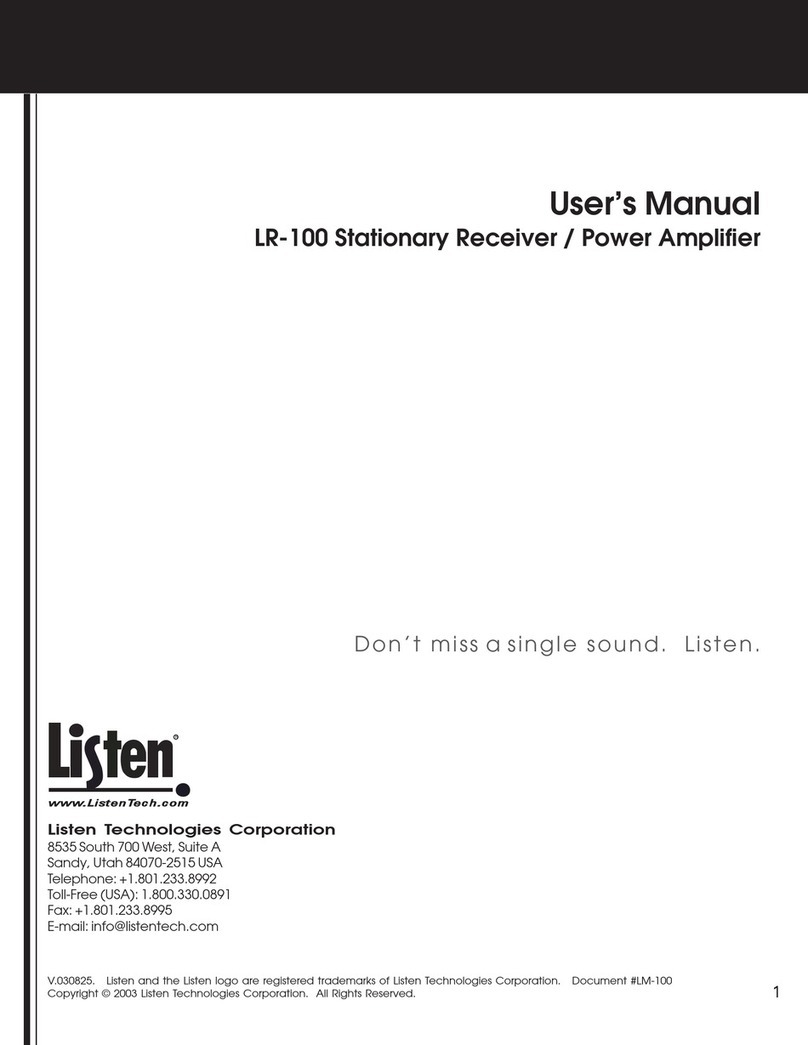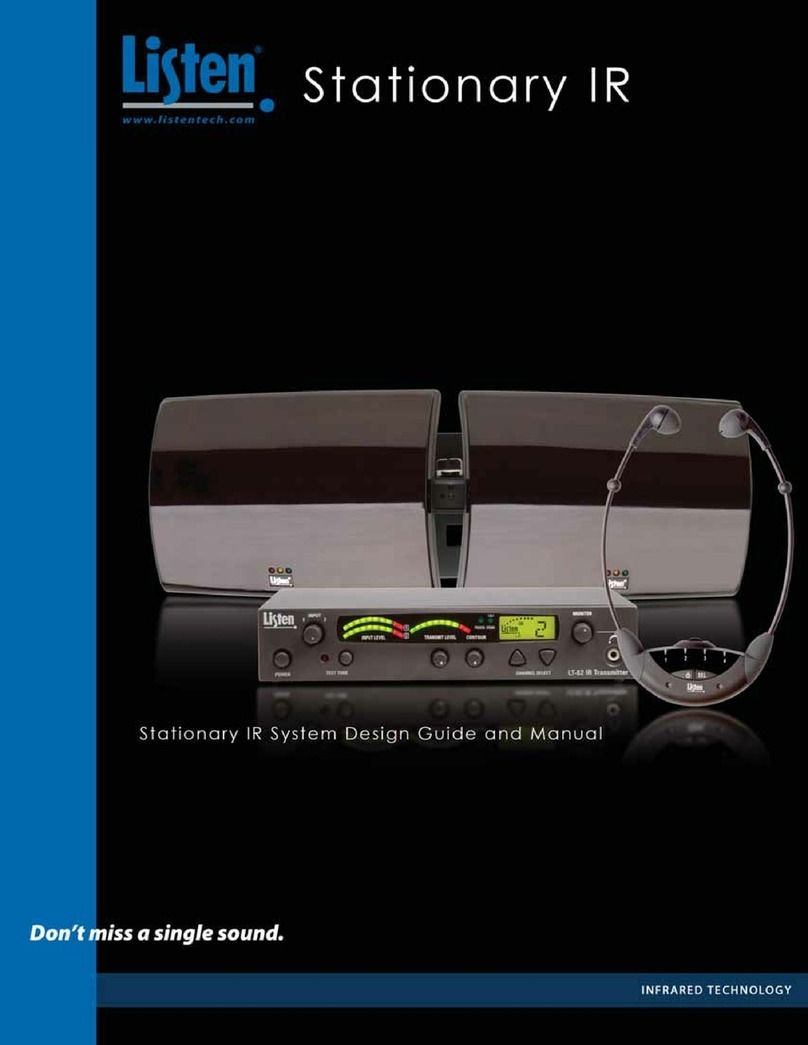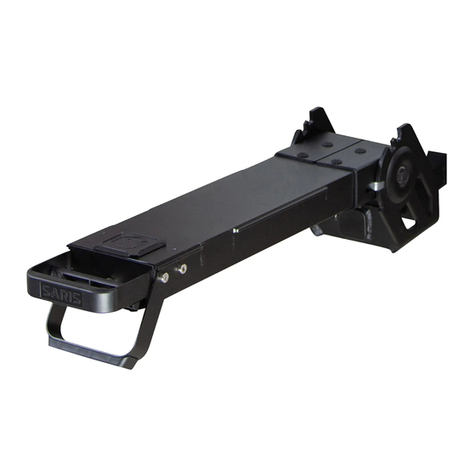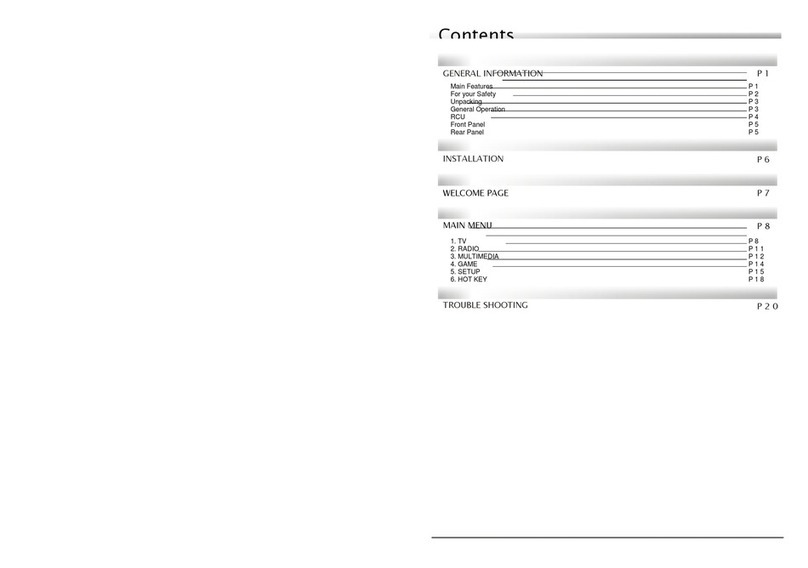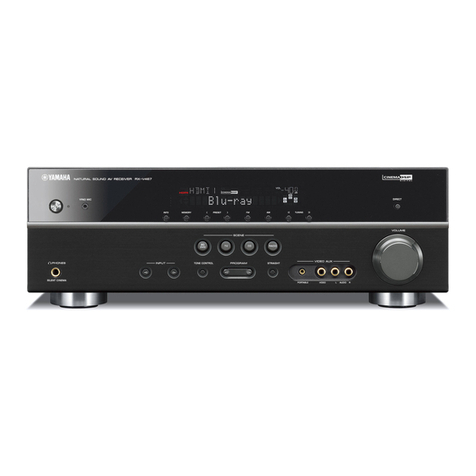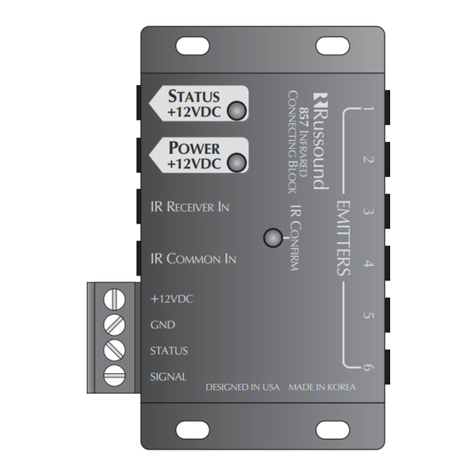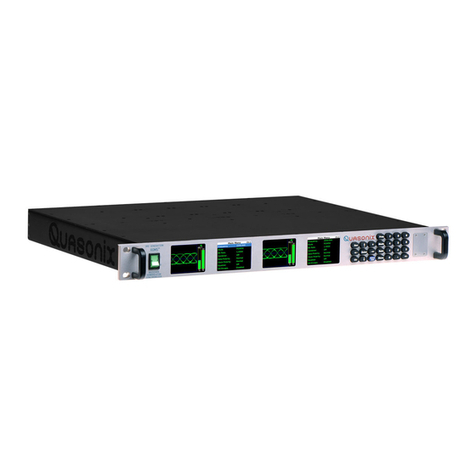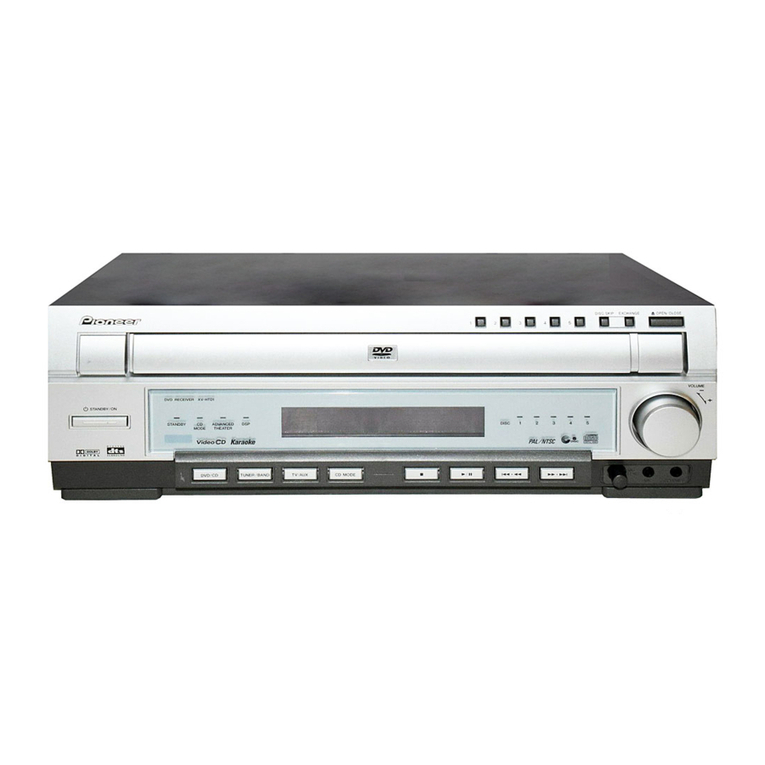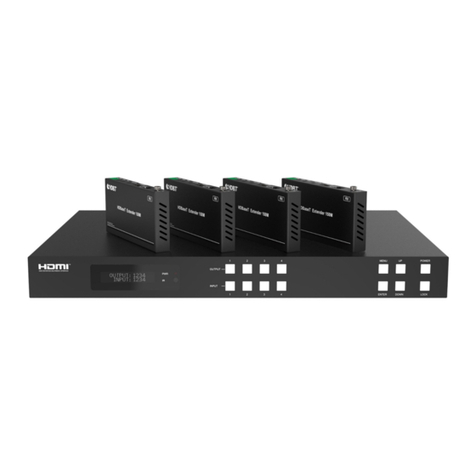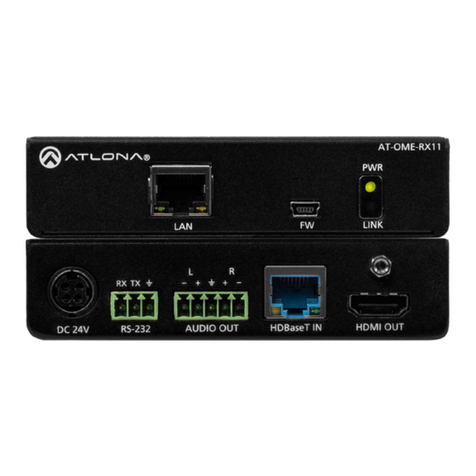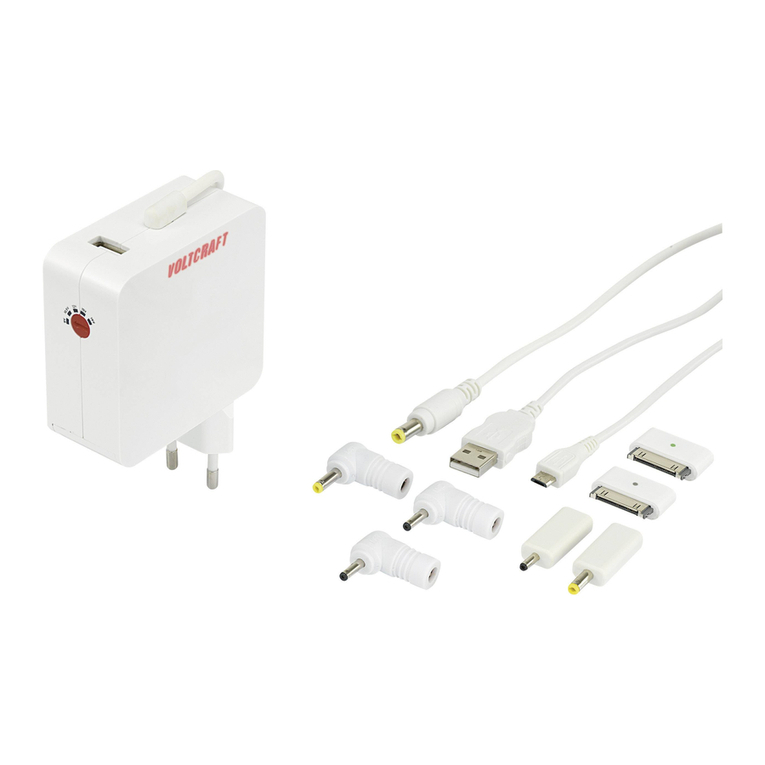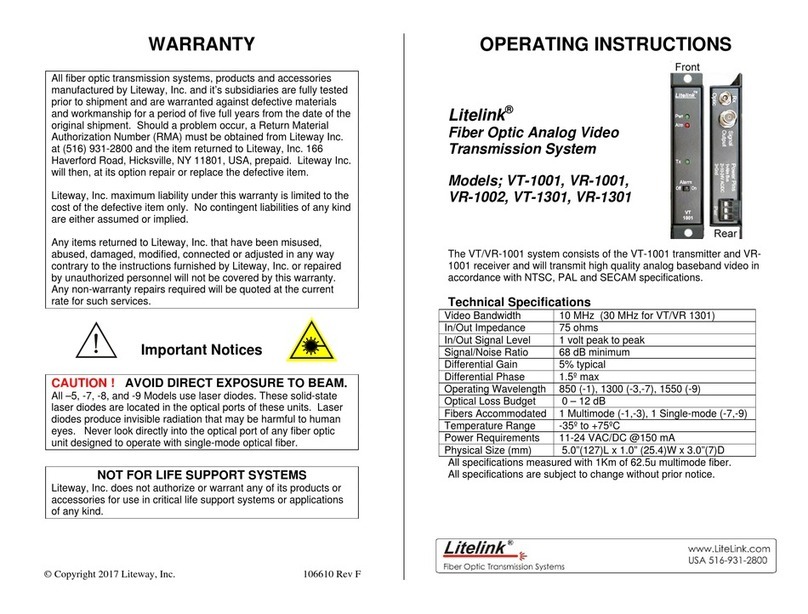
4
Specifications
Specification LR-100-072 LR-100-216
RF Frequency Ran
e 72.025 - 75.975 MH
216.025 - 216.987 MH
Number of Channels 57
17 wide, 40 narrow
57
19 wide, 38 narrow
Sensitivity
Frequency Accurac
Antenna Flexible helical,
9.0 in.
23 cm
included
Flexible helical,
5.5 in.
14 cm
included
Optional Antennas
Antenna Connector
Squelch
Compliance
System Frequency Response 63Hz - 15kHz
±3dB
63Hz - 10kHz
±3dB
System Signal-to-Noise Ratio
A-wei
hted
SQ enabled: 80dB; SQ disabled 60dB SQ enabled: 80dB; SQ disabled 50dB
System Distortion
Auxiliary Input to Output
Balanced Auxiliary Input
Unbalanced Auxiliary Input
Balanced Output
Unbalanced Output
Headphone Output
Speaker Output
Set-up Controls,
Front Panel behind Securit
Set-up Controls, Back Panel
User Controls
Remote Controls
Programming
VU Meter
Power
LCD Display
Squelch
Mute
Power Supply Type
Power Supply Input
Power Supply Output
Power Supply Connector
Compliance
Optional Battery
Optional Battery Char
in
Dimensions W x D x H
Unit Wei
ht
Unit Wei
ht w/LA-201 Power
Shippin
Wei
ht
Rack Mounting
Temperature - Operation
Temperature - Stora
e
Humidity
Receive level, auxiliary input level, SQ on/off, squelch
Audio output select (RX Only, RX + AUX, RX or AUX),
Speaker (Output, Aux), switchable balanced output level
Controls
4.2 lbs. (1.9 kg)
Power
Physical
Green LED illuminates when the output audio is muted
Eight position detachable terminal block, channel up, channel down, mute
Volume, channel UP/DOWN, SEEK (all controls except volume are lockable)
8.50 x 9.12 x 1.75 in. (21.6 x 21.16 x 4.45 cm)
Environmental
RF
Audio
Indicators
± .005% stability 0° to 50° C (32° to 122° F)
Rear panel, One detachable terminal block, bridged, adjustable output level,
15/10 watts (peak/RMS) continuous power with 4 ohm load
Rear panel. Two Phono connectors, unbalanced, -10dBu nominal input level
adjustable, +7dBu maximum, impedance 10k Ohms
Rear panel. One Male XLR, balanced, 0dBu nominal output level, +16dBu
maximum, impedance 2k/10 Ohms (line/mic)
Continuously adjustable via front panel trim pot
Frequency Response: 25Hz to 20kHz (±3dB), SNR: >80dB, Distortion: <0.2%
Rear panel. One Female XLR-1/4 in combo connector, balanced, 0dBu
nominal input level adjustable, +13dBu maximum, impedance 600 Ohms
FCC Part 15, Industry Canada
<2% total harmonic distortion (THD) at 80% deviation
0-95% relative humidity, non-condensing
2.8 lbs. (1.3 kg)
5.6 lbs. (2.5 kg)
1/2 rack unit (RU), optional rack mount not include,
order Listen
art number LA-326
-20° to +50° (-4° to 122° F)
Unit can be programmed so that only desired channels are displayed to the
user, chaannel selection can be locked by holding the SEEK button 5 seconds.
Four LED (three green, one red)
Green LED illuminates when the unit is powered up
Channel, RF signal strength, lock status, programming
Green LED illuminates when the unit is squelched
12VDC, connected via terminal block
UL Listed
In-line power supply, Listen part number LA-201
120VAC, 60 Hz, 19 watts (maximum continuous)
Trickle charge of optional 12VDC battery through terminal block connection
.6uV typical, 1 uV maximum for 12dB SINAD
Several available. See www.ListenTech.com for details
-10° to +40° C (14° to 104° F)
BNC
Rear panel. Two Phono connectors, unbalanced, -10dBu nominal output level,
+2dBu maximum, impedance 2k ohms
Front panel. One 3.5mm stereo connector, unbalanced, adjustable output
level, +16dBu maximum, impedance 32 ohms, 120mW.
15VAC, 1A
.02 in. OD x .01 in. ID (5.0 x 2.5 mm), barrel type
** All system specifications are wireless end-to-end
LA-122 Specifications
Architectural Specifications
The FM stationary receiver - power amplifier (receiver) shall be capable of receiving on 57 wide and
narrow band channels in the frequency ranges of either 72 MHz or 216 MHz. The receiver shall be
programmable to electronically lock out unneeded channels. The device shall have an adjustable
squelch with an LED indication. The frequency response of the device shall be within 3dB from 63 Hz to
15K Hz at 72 MHz, or within 3dB from 63 Hz to 10 kHz at 216 MHz. The signal to noise ratio shall be 80 dB or
greater. The device will have an integrated power amplifier capable of driving an 8 ohm speaker. The
device shall be rack mountable and shall have the capability of a remote antenna. The device shall
incorporate an LCD display that indicates channel and RF signal strength. The Listen LR-100 is specified.
